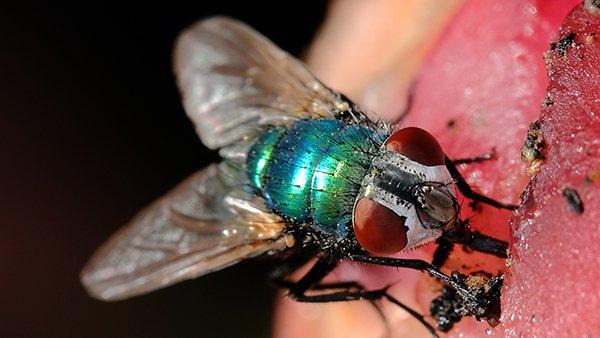If there was a list of the most annoying pest groups in the world, flying insects would likely top it. They are very persistent and won’t stop swarming around you until they get what they want. In some cases, they’re after your blood or bodily fluids, like sweat. For others, your food is the focus. A lot of these bugs are harmful, as they can transmit disease or sting or bite you.
Since flies are so commonplace, people don’t consider them a threat. The reality is that they’re incredibly dangerous. These insects can easily spread illness-causing germs. Locally, the blow species are prevalent. Learn more about their hazards and how you can stop them with All-Safe Pest & Termite in Houston.
How Do Blow Flies Behave? What Are the Risks?
Blow flies are also known as bottle flies. Once they are fully grown, they have metallic skin that is blue, green, or black. Males have small hairs on their antennas. Young are called larvae, or maggots. Their pale, soft bodies are about 0.35 to 0.85 of an inch long and resemble rice grains or worms. Along their many segments are tubercles, which appear furry. As they mature, they develop dark-colored exterior skin. It can be mistaken for a cockroach egg or rodent feces.
Naturally, blow flies are outdoor pests. However, they will come inside your home or business if appealing food is available. Typical entry points for them are cracks in foundations or left-open doors and windows. When they find something to feast on, they will lay their eggs there. They favor rotting meat and plants with a potent odor.
Part of the reason blow flies are such a problem is that they tend to surround animals and feed on carcasses in volume. They can pick up bacteria, pathogens, and disease organisms. If you’re facing an indoor infestation, there’s a strong chance a dead creature is nearby. Perhaps the carrion is in a storage area or structural void. Seeing blow flies or their larvae indicates an issue.
Two major risks with blowflies are:
- Contamination: Water, food, or surfaces can be tainted with microbes and fungi with flies present.
- Medical Conditions: Flies can distribute illnesses to both people and pets, especially if they’ve been in contact with livestock, wounds, or lesions. Dysentery, tuberculosis, cholera, eye infections, and viruses are among the conditions you or someone else could contract.
What Are Ways to Prevent Blow Flies?
You can make your domicile or establishment less appealing to flies if you’re consistent with the following tasks:
- Close up crevices and gaps in windows and screens, doors, and foundations.
- Mow the grass and trim the greenery frequently.
- Make sure plants and flowers are at least two feet away from the property. Get rid of organic debris.
- Inspect fruit and vegetables before purchasing or using them, and leave them in the refrigerator.
- Keep food and trash in canisters with secure lids.
- Wash the dishes, wipe off countertops, and remove garbage on a routine basis.
- Regularly flush out drains, disposals, and similar places where there might be food buildup.
How Will All-Safe Pest & Termite Handle Blow Flies?
It’s hard trying to swat flies; they move so quickly. With retail insecticides, you could oversaturate your space. No one wants chemicals everywhere. Besides, those products will only be mildly effective. To address an infestation, look to us at All-Safe Pest & Termite. Our skilled technicians will employ safe and thorough treatments. Our solutions include perimeter barriers, liquid residuals, granules, dusts, and more. A free estimate awaits you when you call or email us today! Guard your health and that of others!



